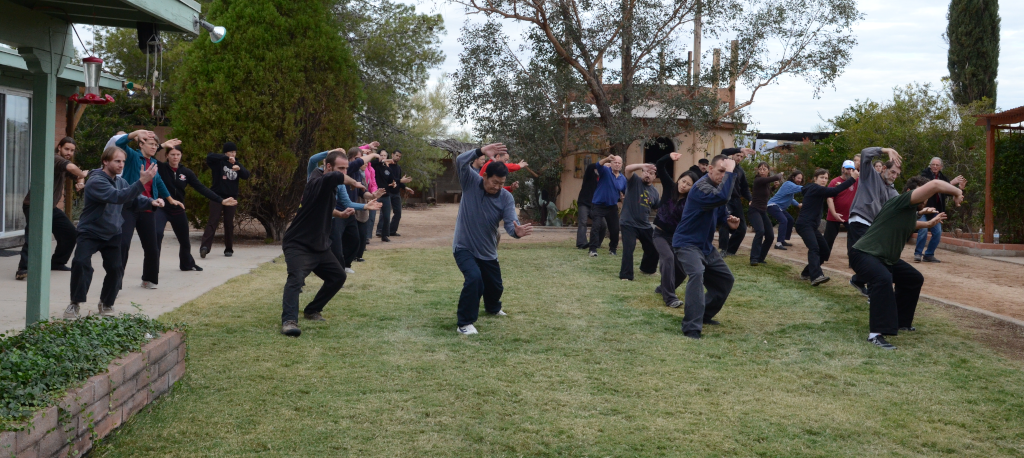Liuhebafaquan, which literally translates as Six Harmonies Eight Methods Boxing, is also known as Water Boxing, or simply liuhebafa. It is a unique martial arts system that contains elements of the three major internal martial arts systems of xingyi, bagua, and taiji.
The origin of the liuhebafa form is unclear. It is usually attributed, however, to the Daoist sage, Chen Tuan, who lived in the tenth century of the current era. He is said to have passed down the form as 134 five-word songs or poems. The six harmonies and eight methods are contained in these songs and serve as the guiding philosophical principles for the movements. Sometime later, the song manuscripts were supposedly discovered by Li Dongfeng at the site of Chen Tuan’s hermitage in central China on the famous Mount Hua. Li then synthesized the liuhebafa form from the texts, and started teaching it.
The liuhebafa form was transmitted to the North American Tang Shou Tao Association through Dr. York Y Loo in the 1980s. Vince met him while he was living in San Diego studying to be an acupuncturist. Dr. Loo was an advanced practitioner of four styles of taijiquan along with liuhebafa. He also taught and practiced acupuncture and herbalism. Dr. Loo’s liuhebafa teacher has been reported by one source to have been Pan Yenlew of Canton, China.
The liuhebafa form has 66 named moves that each contain multiple techniques with martial utility. Members of the Tang Shou Tao who practice the liuhebafa form also practice a set of spherical exercises that reinforces the patterns and energetics needed for the traditional form. The spherical exercise set was added to the association’s liuhebafa curriculum starting in the early 2000s, when several member practitioners began studying it with Khan Foxx in Thailand.


